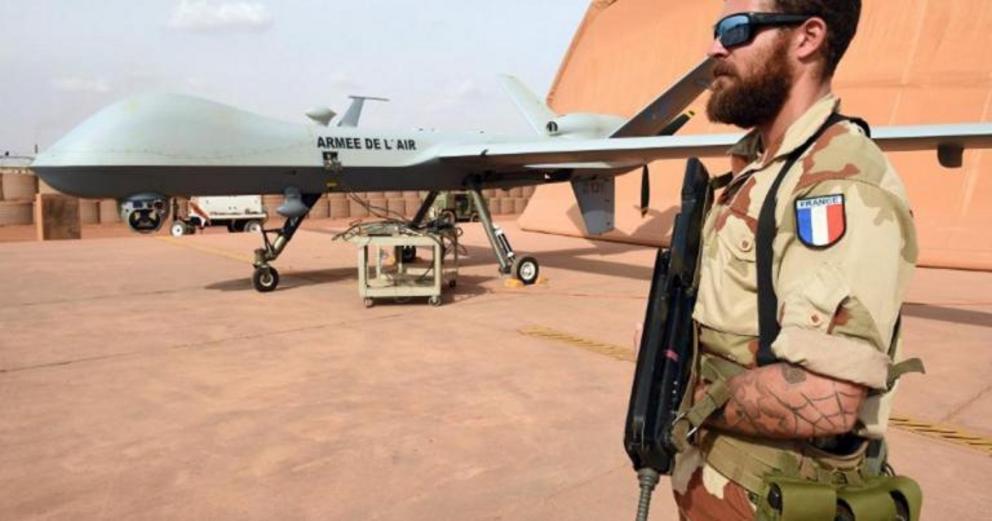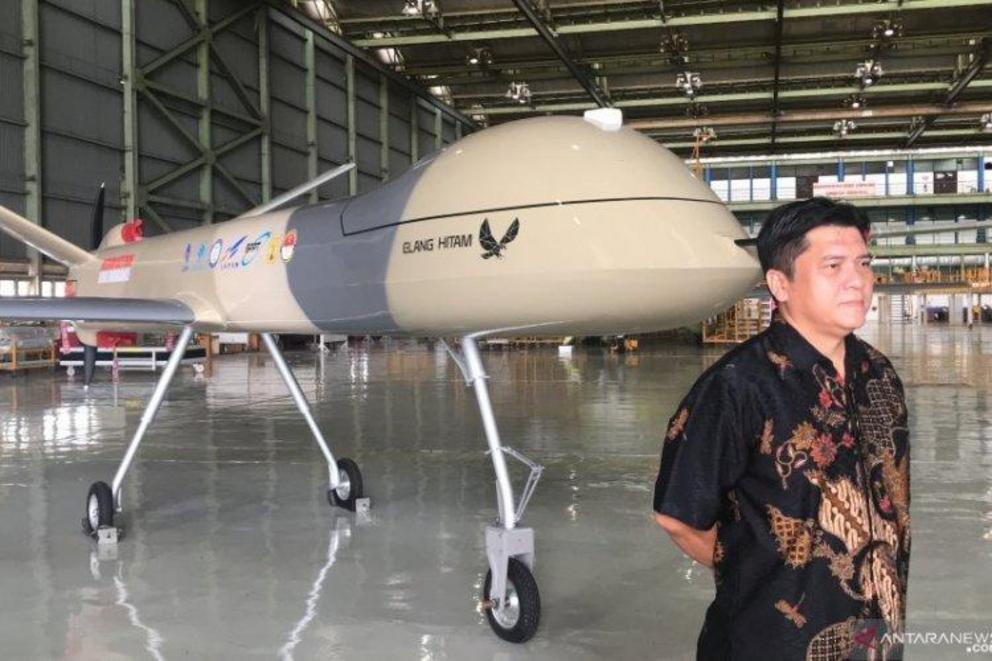Drone Proliferation Update, July 2020
This latest update details new operators and other significant developments around the proliferation of armed drones. For our complete list of states operating, or close to operating, armed drones see Who Has Armed Drones?
Over the last six months, Libya has continued to be the focus for the use of armed drones. France has increased its activity in the Sahel, and several Asian nations, plus Russia, edge closer to operating armed drones. Turkey and Iran also continue to promote their indigenous developments, and the US appears to have decided to unilaterally reinterpret the MTCR guidelines to allow it to increase its export of armed drones.
Meanwhile, UN Special Rapporteur, Agnes Callamard, has urged action on drone proliferation during her annual report to the UN Human Rights Council, arguing of the need for the international community to “undertake effective measures to control their proliferation through export and multilateral arms control regimes and/or under international treaties” in order to tackle effectively the many challenges posed by armed drones, particularly for targeted killings.
US Government Indicates Changes to its interpretation of MTCR
The US National Security Council was due to review changes being made to the US’ interpretation of the Missile Technology Control Regime (MTCR) rules on June 16, reportedly to finalise the reinterpretation suggested by the Departments of Energy, Commerce, Justice and Homeland Security.
Whilst there has been no announcement of the specifics, it is believed that the US changes will mean that both Global Hawk and Reaper drones will no longer be considered Category One systems, dropping into Category Two where the ‘strong presumption of denial’ is relaxed. According to press reports, Northrop Grumann and General Atomics, manufacturers of the above systems, have been informed and it is expected that new sales will be approved in the summer. However, there has been silence over the past few weeks.
This unilateral move is characteristic of the Trump administration when it comes to arms control treaties, but is a worrying development for peace and security since it allows for increased sales of weaponised drones, and sets a precedent for other MTCR members to side-step restrictions. The European Forum on Armed Drones has more.
French Reapers in North Africa

French Reaper drones at Niamey
French Reaper drones have continued to conduct strikes in Mali. In February more than 20 terrorists were killed over two days of Reaper operations, and there were reports of further strikes in May as part of Operation Barkhane in the Sahel region of Africa. On June 5, the French defence minister reported that they had killed Abdelmalek Droukdal, leader of Al-Queda in the Maghreb. The commander of the French Reaper force in the Sahel, also gave an interesting interview detailing French use of armed drones, highlighting how they use the systems differently, with a different formation of crews. France have a further 12 Reaper drones on order to double its fleet, which will be delivered over the next few years.
Iranian Revolutionary Guard Corps claim new indigenous acquisitions
Iran reported that its Mohajer-6 continues to be upgraded with autonomous take-off and landing systems and a new engine. The IRGC also claim they will soon take delivery of the armed Fotros UAV, another MALE UAV that has been in development since 2013. It reportedly has an endurance of 30 hours and a range of 2,000km. Iran also claimed that the army had acquired a new armed drone, capable of carrying 3 bombs and covering a range of 1,500km. No name was given.
Turkey’s escalating use of armed drones

Akinci, Turkey’s new heavy combat drone
The Turkish Akinci was the subject of a documentary (40 minutes of Turkish propaganda about the defence industry, starring President Erdogan’s son-in-law, Selcuk Bayraktar), released at the beginning of Eid al-Fitr at a time of day that symbolised Turkey’s approaching 100th anniversary (20.23). The drone is not yet in service but passed early flight tests in Dec 19.
Erdogan’s hopes to develop a thriving indigenous defence industry by growing Turkey’s export market took another step forward recently when deals to sell the armed Anka-S drone to Tunisia and to Azerbaijan were revealed. The Tunisian deal was announced in March and is reported to be worth $240m, under which Tunisia will receive six airframes, three ground control stations and some level of technology transfer, in a deal said to be worth $240m. The deal with Azerbaijan is for $30m and was ratified by Baku in May 2020.
Meanwhile, Turkey is extending its drone operations both in Libya and within Turkey. In Libya, the army sent in its Bayraktar TB-2 armed drones to support the Government of National Accord (GNA) when Tripoli looked to be under threat from the opposition Libyan National Army (LNA). The use of drones by all parties in Libya escalates and has been well documented so won’t be repeated here. The Turkish air force is also planning a new drone centre in Erzurum province which will support operations against PKK positions in Eastern Anatolia.
Jordan sells its armed drones
Jordan has been trying to sell its Chinese CH-4 drones. It was reported that they had been sold to Haftar’s LNA in Libya although later reports indicated that they are still for sale. Although several countries have been providing assistance in the form of surveillance and armed drones to both sides in Libyan conflict, this is possibly the first time that either side has purchased its own armed drones. Sources on the ground in Libya reported to Alarbay News that handover began at the end of March
Indonesia brings forward introduction of Elang Hitam

Indonesia’s Elang Hitam drone
Indonesia’s Elang Hitam will be ready for military use in 2022, according to the Jakarta Post. Indonesia’s president, Joko Widodo, has called for the introduction of the Elang Hitam to be brought forward by two years. Test flights are expected to begin in October 2020 and five drones will be produced as prototypes to ensure that the vehicles are in line with ‘market demands’. Weaponization of the protoypes will begin in 2021, local media reported.
Russia edges closer to armed drones use
Very recently, in May 2020, the delivery of Orion UAVs to the Russian armed forces was begun, after being signed off by the Defence Ministry in April. According to some reports the Orion can carry a weapons payload of around 200kg. If true, this represents a major step forward the Russian armed forces, to accept an armed MALE drone into service. There is speculation too that it will used in Syria, where several new Russian drones have been tested, and some Syrian sources claimed there was an Orion attack in 2019, thought to be part of testing the drone.
Serbia’s Chinese armed drones
In our previous proliferation report, we said that Serbia was intending to purchase Wing Loong drones, the first European deal for armed drones with a Chinese company. However, that turns out not to have been quite correct and the deal is in fact for 18 CH-92A drones, six of which have now been delivered. There will also be some level of technology transfer that will support the development of Serbia’s indigenously made Pegasus drone. According to Dan Gettinger, the Wing Loong deal is still on the table.
Decision Time for Germany
The issue of whether to arm Germany’s Heron-TP drones has been a contentious one over the last few years. The army is keen and has convinced a number of government ministers but many parliamentarians and the public opinion have been resistant. In May of this year, the debate was reopened with hearings from experts – both military and legal – and parliament is set to vote on the issue soon. Read more on the debate on the EFAD blog.
In other news…
- Greece and the UK are in the process of acquiring large Israeli surveillance drones – the Heron I and Hermes 900, respectively – for maritime border surveillance. Neither drones are armed but have been used extensively by Israel against the Palestinian population. A forthcoming Drone Wars report will examine the use of drones for border security.
- Indian Special Forces have acquired a quadcopter which can fire grenades. Although tiny in comparison to the government’s hopes for a armed MALE drone, the significance of this is development is that it can be used in dense urban areas. For example, the manufacturers, VINVELI suggest that it could be used to aid hostage situations, by breaking down building exteriors – the “30th floor of a hotel room in an urban environment” – before releasing smoke or stun grenades. The dangers of this approach, don’t need spelling out.
- Taiwan will seek to import armed Reapers in 2023-24, in a deal with $166m. The package includes ammunition, confirming that, if US agrees to supply them, they will be armed.
- In March it was reported that Malaysian police had begun using drones to ‘encourage’ citizens to stay at home during the state’s coronavirus lock-down. This is not the only incidence of the global pandemic that has seen an increased use of drones, from delivery to border patrol particularly in Asia, civilian and domestic use of drones has grown. This will no doubt have a lasting impact on the ubiquitous presence of drones in our cities and borders.

